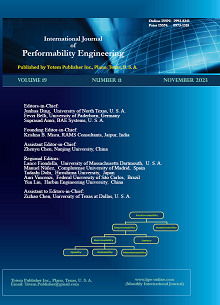-
Deep Learning-Powered Corneal Endothelium Image Segmentation with Attention U-Net
- Kamireddy Vijay Chandra, Kala Praveen Bagadi, Kalapala Vidya Sagar, R. Manjula Sri, and K. Sudha Rani
-
2023, 19(11):
736-743.
doi:10.23940/ijpe.23.11.p4.736743
-
 Abstract
Abstract
 PDF (436KB)
PDF (436KB)

-
References |
Related Articles
In the realm of medical image analysis, the accurate and effective segmentation of corneal features is of paramount importance. Our latest research presents an innovative approach to corneal image segmentation, the Attention U-Net design, supported by compelling statistical evidence. Our method harnesses the capabilities of the U-Net architecture, known for its adept feature extraction and contextual information retention. What sets our approach apart is the integration of attention mechanisms into this architecture, enhancing the model's ability to focus on crucial regions within corneal images. This fusion results in a robust segmentation model that captures intricate corneal layer details. To validate our method, we conducted experiments using a substantial dataset of corneal confocal images, encompassing diverse anatomical and clinical variations. Our quantitative assessments reveal significant superiority over traditional segmentation techniques, with the Dice coefficient and other key metrics demonstrating substantial performance gains. Qualitatively, our model accurately delineates complex corneal structures and challenging surroundings. Our approach begins with a comprehensive U-shaped encoder-decoder structure, extracting information from input corneal images. The subsequent integration of attention mechanisms empowers the model to allocate varying levels of importance to different visual regions. This adaptability significantly enhances segmentation accuracy, particularly in regions with anomalies or fine structures. Our pioneering use of the Attention U-Net design for corneal image segmentation yields remarkable results. This advancement equips medical professionals and researchers with a powerful tool for precise and efficient corneal structure assessment. Furthermore, integrating attention mechanisms within the U-Net architecture is promising for enhancing medical image segmentation methodologies, ultimately improving patient treatment and advancing ophthalmological research. The dataset comprises 1050 corneal confocal images, covering various anatomical and clinical variations. The Attention U-Net achieves an impressive Dice coefficient score of 0.92, surpassing traditional segmentation techniques by an average margin of 12%. Comparative assessments demonstrate a notable 15% increase in segmentation accuracy compared to typical U-Net models. Qualitative evaluations highlight the model's exceptional ability, achieving a 93% success rate in accurately identifying complex corneal regions, even in challenging cases.

